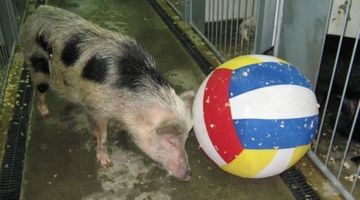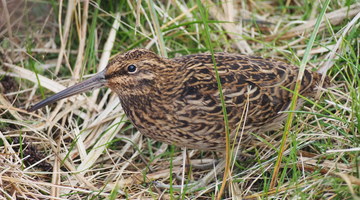To minimise the risk of disease1 transmission from pigs to humans, LCT uses a unique breed of pigs as the source of cells for their pig cell transplants. The pigs come from the isolated environment on the subantarctic Auckland Islands and are free of diseases2 commonly seen in the domestic pig herd.
LCT houses the pigs in a specially designed barrier facility that prevents entry of disease-causing pathogens3, such as viruses and bacteria. The herd is designated pathogen-free and tested regularly to ensure they remain so.
Get article: Designated pathogen-free pigs – origins and welfare.
Transcript
Isobel Cooper (Living Cell Technologies)
The LCT pigs came originally from the Auckland Islands. This is a small group of subantarctic islands off the southern coast of New Zealand, about a third of the way to Antarctica. And the pigs were originally put there by sailors as a food source for other sailors that might get shipwrecked. The original pigs that were put on the islands were a mixture of breeds, so ultimately, they bred and became a breed in their own right.
They were brought to New Zealand from the Auckland Islands by the Rare Breeds Trust that had heard about them, and the Department of Conservation4 felt they wanted to eradicate5 the pigs from the Auckland Islands, because when they survive there, they eat some of the rare herbs on the islands. So the Rare Breeds Trust decided that they would rescue some of these pigs and bring them back to New Zealand to carry on the breed. Once they were back here, that’s when LCT tested them and found out that they were extremely rare, as in they’re very, very clean with none of the modern pig viruses. On the Auckland Islands, it’s almost like being in a natural pathogen-free facility because they’re so isolated. It’s so cold, not many viruses survive anyway, and no one really wants to go there.
We keep them in special facilities. They stay inside all the time. Their air is filtered so that it is totally clean and sterile. All of their feed and bedding is sterilised, and even the staff shower and wear sterile6 clothing when they go in there.
To make sure that we know that they’re remaining clean, we take regular blood samples and faecal7 samples from the pigs, and a team of microbiologists at LCT test those to make sure that they are still clean.
Acknowledgements
NASA
Wreck of Grafton, Epigwaitt, Auckland Islands. 1888. Dougall, William, Burton Brothers. Reproduced courtesy of Museum of New Zealand Te Papa Tongarewa
Tui De Roy, Roving Tortise Worldwide Nature Photography
Dave Matheson & Michael Willis, Rare Breeds Conservation Society
Nyla Strachan, Department of Conservation
PRN Films



